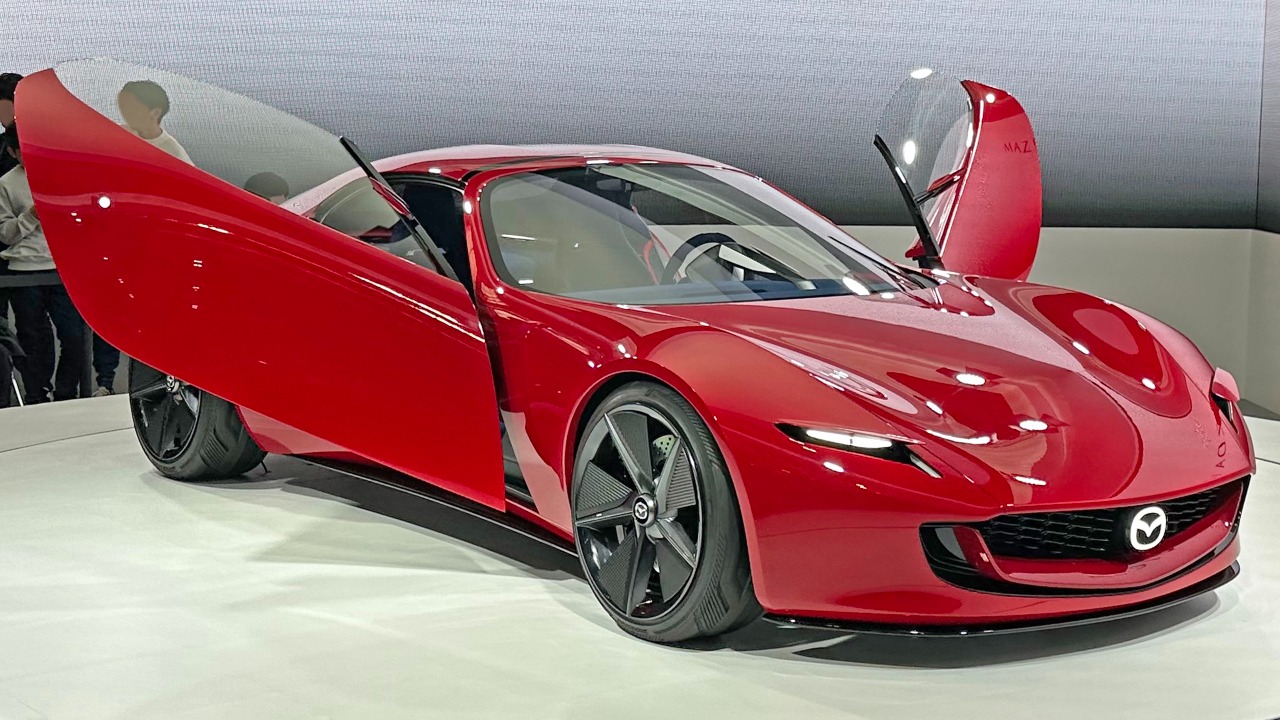
Mazda’s Soul Red Crystal paint has become a sensation not just for its vibrant hue, but also for its unique optical properties. This signature red, featured on models like the MX-5 Miata and CX-5, creates an illusion of depth and dimension that changes under different lighting conditions. Despite its premium cost, the paint’s standout qualities often make it a worthwhile choice for buyers, even considering the maintenance it requires.
The Origins of Mazda’s Iconic Red
The Soul Red Crystal paint made its debut on Mazda vehicles in the early 2010s, evolving from standard reds to a multi-layered formula that enhanced its vibrancy. This development was influenced by Mazda’s philosophy of “KODO” design principles, which aimed to embody motion and emotion through color. The 2016 Mazda6 was one of the early adopter models where the paint first gained widespread notice for its head-turning effect.
Unpacking the Layers of Soul Red Crystal
The application process of Soul Red Crystal involves multiple coats, starting with a base red, followed by a clear coat containing glass flakes, and finally a translucent layer that adds depth without increasing the thickness beyond standard paints. The paint uses aluminum flakes suspended in a specialized clear coat to reflect light in varied ways, creating a three-dimensional appearance. This layering process is evident on vehicles like the Mazda3, where subtle color shifts from ruby to deeper crimson tones can be observed.
The Optical Illusion at Play
Soul Red Crystal manipulates light to produce an illusion of curvature and volume on flat panels, making cars appear more sculpted than they are. This effect is particularly pronounced in sunlight versus shade, often fooling the eye into perceiving movement. Road tests have shown that this illusion enhances the aesthetic appeal of compact SUVs like the CX-30, adding to the car’s overall allure.
Why It Captivates Drivers and Enthusiasts
Since its introduction, Soul Red Crystal has remained a popular choice among Mazda buyers seeking a premium look. Its ongoing popularity is evident in surveys and anecdotal evidence from car shows and social media, where the paint’s “special” quality often sparks conversations and compliments. The paint has also played a significant role in Mazda’s branding, positioning the brand as innovative in affordable luxury through visual storytelling.
Practical Considerations for Buyers
The added cost of Soul Red Crystal, typically $300–$500 extra, is a factor for potential buyers. However, many find it justifies the visual upgrade on models like the CX-5. In terms of durability, the paint is resistant to fading but may show swirl marks more readily than solid colors. Maintenance tips include using specific waxes to preserve the multi-layer effect over time.
Comparisons to Other Reds in the Industry
When compared to competitors like Toyota’s Supersonic Red or Honda’s premium paints, Soul Red Crystal stands out for its optical depth. Mazda’s formulation is noted for its metallic yet non-garish finish, avoiding the flatness of basic reds. Industry experts have consistently ranked it as a benchmark for red automotive finishes in their evaluations.
Looking Ahead: Mazda’s Paint Innovations
Looking to the future, Mazda may continue to innovate with its paint formulations, potentially integrating eco-friendly pigments while maintaining the illusion effect. The paint continues to define Mazda’s lineup in 2025 models, reinforcing its enduring fame. As Mazda continues to blend artistry with engineering, Soul Red Crystal will likely remain a defining feature of its future vehicle designs.
More from MorningOverview